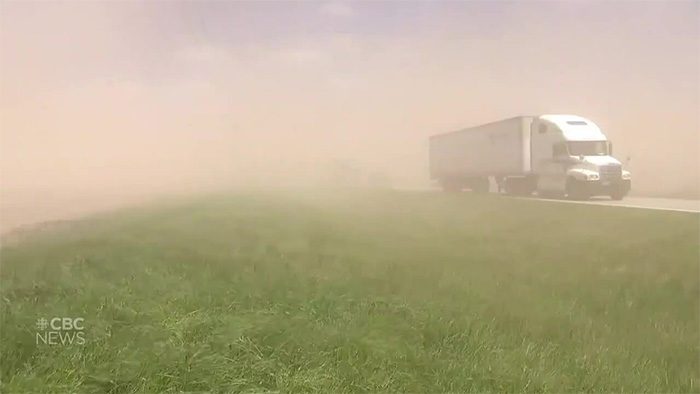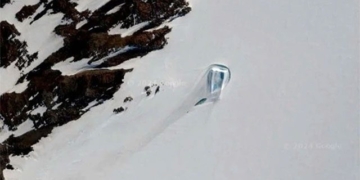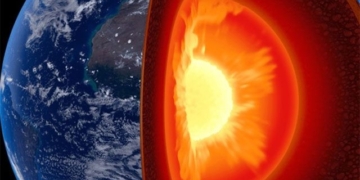The drought, combined with strong winds, has caused soil dust from freshly plowed fields to blow onto highways, resulting in severe consequences.
Dust storm in Illinois on May 1 caused multiple vehicle collisions. (Video: CBC News)
On May 1, a dust storm swept through, reducing visibility on highways in Illinois, leading to a pile-up involving 80 vehicles. The collisions resulted in two vehicles catching fire. Authorities reported that at least six people died and over 30 were injured to varying degrees, including children.
Officials stated that the dust storm arrived rapidly, creating conditions similar to a whiteout blizzard, significantly reducing visibility. According to the National Weather Service (NWS), dust storms can occur anywhere in the United States but are most common in the Southwest. They are rare in central states like Illinois, according to Ben Deubelbeiss, a meteorologist at NWS.
However, a period of drought combined with very strong winds fueled the dust storm on May 1, Deubelbeiss noted. He also pointed out that Springfield Airport – located about 50 kilometers north of the pile-up site – recorded rainfall at approximately half of the normal amount for April. Wind gusts at the airport reached 65 km/h on May 1.

Dust storms can occur anywhere in the country, but they are most common in the Southwest.
The dust may originate from freshly plowed fields, according to Chief Meteorologist Nick Hausen from WSIL television. Meteorologist Chuck Schaffer at NWS also noted that the area is very flat with few trees. “For the past three weeks, it has been very dry here. Farmers are plowing and planting. The topsoil is quite loose,” Schaffer said.
“Dust storms have occurred in various regions of Illinois when the winds are too strong and farmers have plowed their fields, making the topsoil more loose. The soil is very dry and will be carried by strong winds in the area to certain roads,” explained Officer Ryan Starrick from the Illinois State Police at a press conference on May 1.
According to the National Oceanic and Atmospheric Administration (NOAA), a dust storm is a “wall” of dust and debris, often driven by strong winds from thunderstorms to certain areas.
Dust storms are common in flat, treeless areas. Forecasters indicate that both of these characteristics allow winds to build momentum, becoming stronger and carrying more dust into the atmosphere.
Dust storms may last only a few minutes but can cause issues for days or even months afterward. For instance, dense dust can reduce visibility for pilots. Breathing in dusty air can also lead to various health issues, especially for those with asthma.


















































